Ayodhya is an ancient city of India’s rich heritage of culture and spiritual significance, located alongside the banks of the holy Sarayu River. Sree Ram Janmabhoomi Mandir is an evidence to the close connections that exist between mythology and reality. Due to its spiritual atmosphere and rich cultural legacy, devotees are attracted to Ayodhya year-round, as it is the birthplace of Lord Ram and holds a special place in their hearts. Ayodhya welcomes guests on a journey of discovery and respect among the sounds of ancient mantras and the aroma of sandalwood. Tales of divine grace and timeless devotion can be found everywhere in this wonderful city, from the majestic temples to the sacred ghats.
History of Ayodhya Ram Mandir:
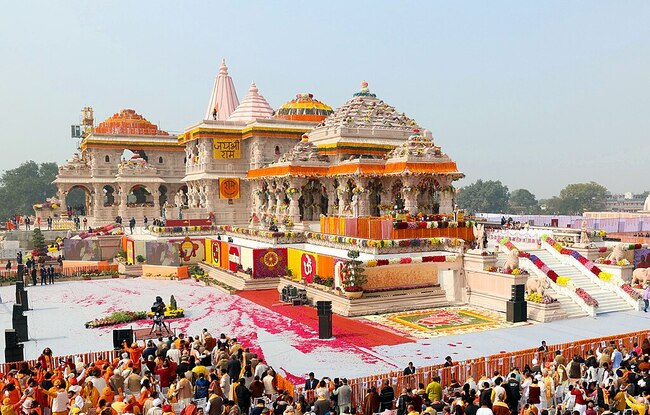
The Ayodhya Ram Mandir’s history is deeply rooted in Hinduism, dating back centuries to when it was the sacred birthplace of Lord Ram, a highly admired deity. Built on this sacred site, the temple stood as an evidence to devotion until the 16th century, when Mughal emperor Babar threatened to demolish it. The Babri Masjid was built in its place and would for centuries thereafter serve as an epicenter of religious and political conflict.
The ownership of the site and its significance as the birthplace of Lord Ram were at the heart of the decades-long Ayodhya dispute, which was deeply linked to Indian politics. In 2019, the Indian Supreme Court declared a landmark decision that resolved the dispute and reaffirmed the importance of Ayodhya as a sacred pilgrimage site by allowing the construction of the Ram Janmabhoomi temple. Building on the temple began anew under the direction of the Shri Ram Janmabhoomi Teerth Kshetra, celebrating centuries of spiritual reverence and devotion. The temple was inaugurated by the Indian Prime Minister Narendra Modi on January 22, 2024.
9 Top Places to Visit in Ayodhya:
Discover the sacred places and cultural wonders of Ayodhya as you explore deeper into the city’s spiritual soul beyond the Ram Mandir.
1. Kanak Bhavan (1 km):
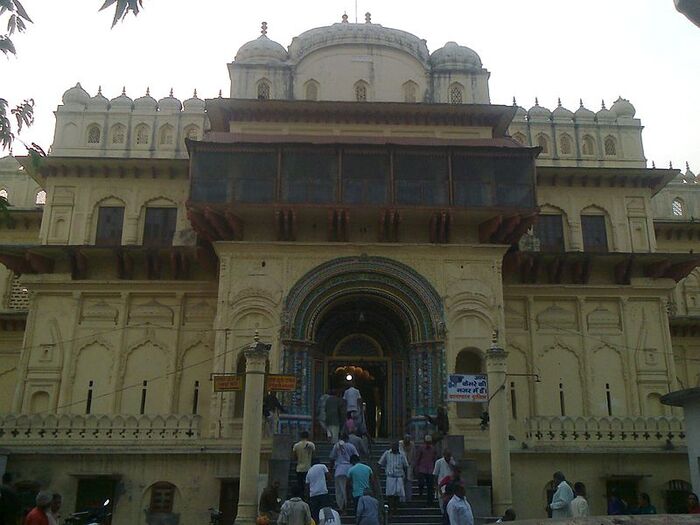
Kanak Bhavan, also called Sone-ka-Ghar, was built in 1891 in the northeastern part of Ram Janmabhoomi in Tulsi Nagar. It is a honoured shrine to Lord Rama and Goddess Sita. According to myth, Kanak Bhawan was given to Rama by his stepmother Kaikeyi. It experienced a significant transformation under Vikramaditya’s rule and was further restored by Vrish Bhanu Kunwari. This Bundela-style marvel, which is run by the Sri Vrishbhan Dharma Setu Trust Pvt. Ltd. never disappoints its guests with its ongoing charm and spiritual attraction.
| Timings | 8:00 a.m.-11:00 a.m., 4:30 p.m.-9:00 p.m. |
| Entry Fees | Free |
2. Hanuman Garhi Temple (500 meters):
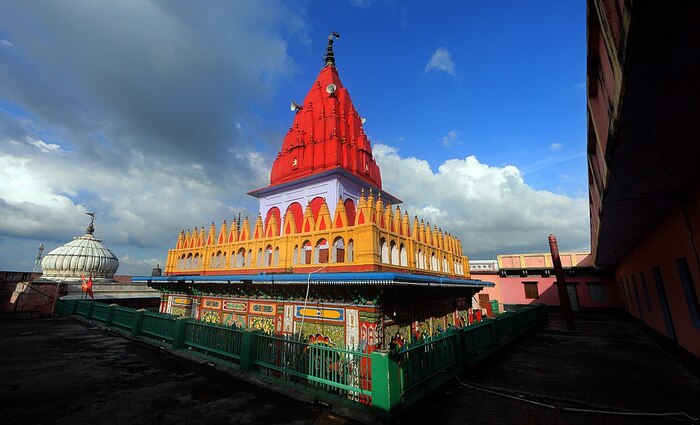
Hanumangarhi, a honoured 10th-century temple recognising the powerful Hindu deity Hanuman, stands atop Sai Nagar. It is an important stop before going to the Ram Temple in Ayodhya, and it is thought that Lord Hanuman himself supervised it. Climb the 76 steps to see the expansive view and the 6-inch-tall idol of Hanuman, which is hidden away among statues in the inner cave of the temple. This is a place of great admiration on Hanuman Jayanti and Ram Navami celebrations.
| Timings | 5:00 a.m. – 11:00 p.m. |
| Entry Fees | Free |
3. Nageshwarnath Temple (2 km):
This temple, located next to Theri Bazaar in Ayodhya, is rich in legend and history and is dedicated to the local deity Lord Nageshwarnath. The temple was reconstructed in 1750 by Naval Rai, the minister of Safar Jung, and is said to have been founded by Lord Rama’s son Kusha in 750 AD. It is well-known for its Shiva Barat, a grand procession honouring Lord Shiva that recalls with centuries of intense respect, drawing devotees during Mahashivaratri and Trayodashi.
| Timings | 5:00 a.m. – 8:00 p.m. |
| Entry Fees | Free |
4. Sita ki Rasoi (1 km):
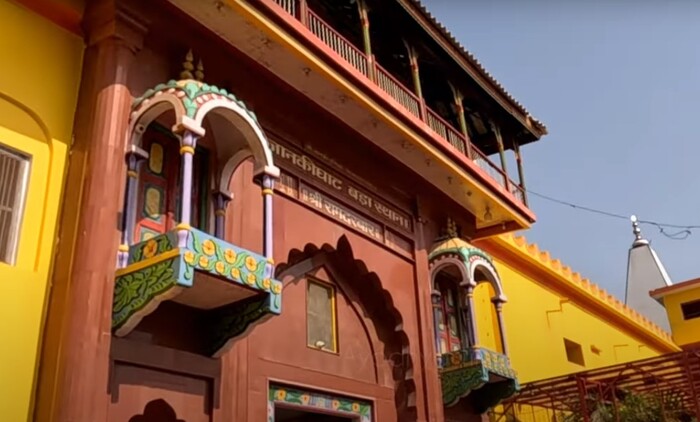
Sita ki Rasoi, the ancient kitchen of goddess Sita, has a history in mythology and is located in Rajkot, Ayodhya, on the northwest side of Ram Janmabhoomi. After being converted into a temple, it currently holds holy antiques and idols, such as images of Lord Ram and his siblings. In honour of the Goddess of Food, Sita, the temple maintains the custom of providing guests with complimentary meals, thereby cultivating a spirit of charity and community within the holy premises.
5. Treta Ke Thakur:
Located on Naya Ghat in Ayodhya, the Treta Ke Thakur Temple is a highly acclaimed place that holds beautifully sculpted idols of various deities, including Hanuman, Sita, and Lord Ram, all carved from a single black sandstone. The 300-year-old temple, credited to King Kullu, has a deep connection to the Ashwamedha Yagna sacred grounds, where Lord Rama performed his yagna. It is only open to the public on Ekadashi, a day filled with lively festivities and treasured customs, and serves as a reminder of lasting devotion and heritage of culture.
6. Tulsi Smarak Bhawan:

The ageless epic Ramcharita is thought to have been written at the Tulsi Smarak Bhawan in Ayodhya, which honors the saint-poet Goswami Tulsidas. Built in 1969 on the eastern end of the National Highway, this imposing building is home to the ‘Ayodhya Research Sansthan,’ a large library and research facility devoted to studying the spiritual and cultural legacy of Ayodhya. In addition, the Ram Katha Sanghralaya museum, which was established in 1988, is a centre of devotion and knowledge in the heart of Ayodhya. It features an extensive collection of artefacts and insights into the life and times of Lord Sri Ram.
7. Ramkatha Park, Ayodhya:
Located in the heart of Ayodhya, the stunning Ram Katha Park is a center for cultural events, recreational activities, and devotional programs. It features spacious lawns and serene outdoor theatres. This large park encourages cross-cultural interaction and displays the artistic abilities of both domestic and foreign artists, whether it is used for religious ceremonies or as a peaceful haven for wanders. Ram Katha Park is a well-liked retreat that provides relief from the hustle and bustle of the city, thanks to its spacious environs and airy amphitheater.
8. Darsharth Mahal (700 meters):
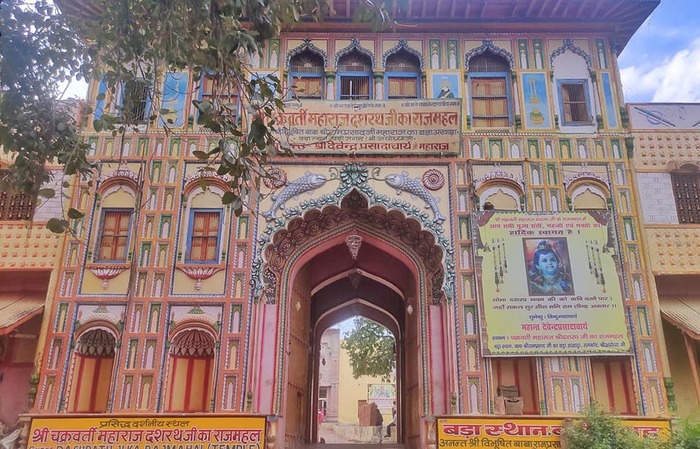
Dashrath Bhavan, the former home of King Dashrath, is tucked away in the centre of Ramkot Ayodhya and provides a window into the city’s royal past. This magnificent palace, also called Bada Asthan or Badi Jagah, is beautifully decorated with shrines dedicated to King Ram, which represent the rich cultural heritage and history of the area. Dashrath Bhavan attracts tourists with its elaborate beauty and historical significance during festive occasions like Ram Vivah, Karthik Mela, and Diwali.
9. Sarayu Ghat:

One of the most beloved locations in Ayodhya, the calm shores of Sarayu Ghat, adorned with ghats such as Naya Ghar, Guptar Ghat, Ram Ghat, and Lakshman Ghat, provide a peaceful haven. Observing the captivating Aarati rituals on these ghats at sunrise and sunset is an amazing spiritual experience that transports guests to an atmosphere of spiritual serenity and inner peace.
10. Sugriva Temple:
The Sugriva Temple, an ASI site, is located in the Hanuman Garhi neighbourhood of Ayodhya and is very important both religiously and historically. Built by King Bharat following the return of Lord Ram from exile, the temple also functions as a centre for religious instruction. Its vibrant celebrations of holidays like Janmashtami, Guru Purnima, and Ramnavami contribute to its cultural attraction and draw both tourists and devotees.
11. Choti Chawni:
Choti Chawni, also called Maniramdas Chawni or Valmiki Bhawan, is an outstanding work of art in Ayodhya that is made entirely of pure white marble. This architectural treasure invites guests to experience its magnificence up close with its stunning beauty and extensive history. With thirty-four ancient caves—including those connected to Buddhism, Hinduism, and Jainism—Choti Chawni is a showcase for the elaborate beauty of ancient architecture, which is further enhanced by the Kailasha Temple, which is housed within the caves.
12. Mani Parbat:
Mani Parbat is a peaceful hillock in Ayodhya that is close to Kami Ganj. Rising about 65 feet above sea level, it provides a beautiful view of the city as well as an insight into its rich historical tapestry. In addition to being a viewpoint, this holy place is home to a stupa and a Buddhist monastery that are said to have been inaugurated by Emperor Ashoka. Many well-known holy places, such as the well-known Sugriv Parbat, are tucked away atop Mani Parbat, creating a serene haven rich in spiritual meaning.
Explore Ayodhya Tourist Places on Google Map:
Architecture of the Ayodhya Ram Mandir:
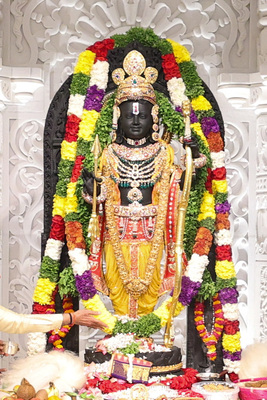
The Ayodhya Ram Mandir’s architecture, which is recognised for its tall peaks and detailed preparation, is a monument to the glory and magnificence of the Nagara style. The temple is 2.77 acres in size and is primarily made of pink sandstone. It includes a large courtyard and several smaller shrines dedicated to different Hindu gods. Still, the temple’s skyline is dominated by the majestic shikharas, which rise gloriously into the sky and attract devotees from all over.
The temple is home to many wonders, but one outstanding feature is the Shaligram stone, a massive black stone that is believed to be the symbol of Lord Ram and comes from the holy Gandaki river in Nepal. The Ayodhya Ram Mandir is an eternal temple to faith, architecture, and the unbreakable bond between man and god, as visitors are amazed by the lavish carvings and divine symbolism decorating its walls.
Ram Mandir Aarti Timings:
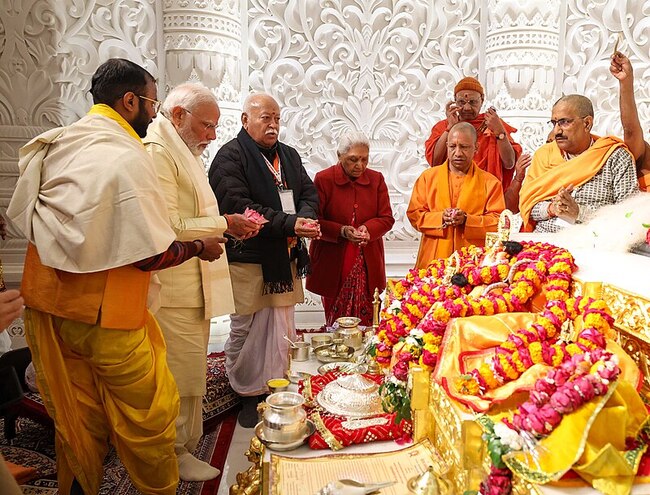
| Mangala Aarti | 04:30 a.m. |
| Shrungar Aarti | 06:30 a.m. |
| Bhog Aarti | 11:30 a.m. |
| Madhyah Aarti | 02:30 p.m. |
| Sandhya Aarti | 06:30 p.m. |
| Shayan Aarti | 08:30 p.m. to 09:00 p.m. |
Places to Stay Near Ayodhya Ram Temple:

Discover comfortable accommodations closed to the Ayodhya Ram Temple with details on its room, rent, distance, contact numbers, ensuring a serene retreat for pilgrims and travelers alike.
| Name of Place | Available Rooms | Rent | Distance | Contact No. |
| Jain Dharmshala | 50 | Rs. 500-2000 | 1.5 | 6260363803 |
| Ayodhya Vaidehi Bhawan Dharamshala | 200 | Rs. 1000-3000 | 2 | 7570088000 |
| Kanak Mahal | 50 | Rs. 1000-3000 | 2 | 9682958388 |
| Ram Hotel | 50 | Rs. 1000-3000 | 1 | 9415140674 |
| Ramprasth Hotel | 40 | Rs. 1000-3000 | 2 | 8115000098 |
| Ramila Kutir | 25 | Rs. 5,000 | 2 | — |
| Ramayanam Hotel | 40-50 | Rs. 20,000 | 3 | — |
How to Reach Ayodhya Ram Temple:
By Air:
Many airlines fly to Mahirishi Valmiki International Airport in Ayodhya, which is about 10 km from Ayodhya Dham, from major cities.
By Tran:
One of the district’s main train stations, Ayodhya Cantt, and Ayodhya itself are well connected to almost every towns and cities. By rail, the distances to Ayodhya from Prayagraj, 171 km from Gorakhpur, 128 km from Lucknow, and 196 km from Varanasi are, respectively.
By Road:
The Uttar Pradesh Transport Corporation buses operate around the clock, and getting here from anywhere is quite simple. The city is approximately 130 kilometres from Lucknow, 200 kilometres from Varanasi, 160 kilometres from Prayagraj, 140 kilometres from Gorakhpur, and 636 kilometres from Delhi. There are regularly buses from Delhi, Gorakhpur, and Lucknow. Additionally, buses are accessible on a schedule from Chhapaiya, Prayagraj, Varanasi and other locations.
Ayodhya Distance From Other Cities:
Discover the distances from other well-known cities to reach Ayodhya Ram Temple.
| Name of City | Distance (Km) | Time to Take (Hours) |
| Delhi | 688 | 11 |
| Mumbai | 1600 | 38 |
| Jaipur | 710 | 13 |
| Ahmedabad | 1350 | 34 |
| Inodre | 930 | 19 |
| Bhopal | 781 | 13 |
| Chandigargh | 914 | 15 |
| Raipur | 782 | 19 |
| Ranchi | 667 | 20 |
| Patna | 417 | 11 |
Ayodhya Complete Darshan Guide:
Ending Words:
In conclusion, the area around Ayodhya’s Ram Mandir reveals a tapestry of historical, spiritual, and cultural treasures that invite guests on a forever beautiful and profoundly significant journey. From the magnificent temples of Kanak Bhavan and Nageshwarnath Temple to the serene banks of Sarayu Ghat and the holy hills of Mani Parbat, every location provides a different window into the rich history and ingrained mythology of Ayodhya. The top attractions close to Ram Mandir offer a unique experience full of reverence, inspiration, and wonder, whether one chooses to take solace in prayer, take in the vibrant culture of the city, or just take in its architectural beauty.
Image Courtesy: Wikipedia
FAQs:
The darshan timings in the morning are from 06:30 a.m. to 12:00 noon and in the afternoon 02:30 p.m. to 10:00 p.m.
Ram navmi, Diwali, Zula Utsav, Kartak melo, saryu snan are the main festivals.